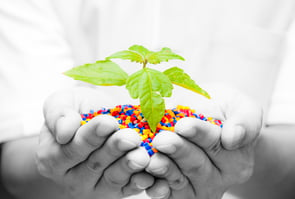 Those of us living and working in the plastics world have undoubtedly heard the comments before – plastics are not sustainable; single-use plastics produce too much waste; plastics are environmentally problematic, etc. As sustainability becomes more important to consumers, pressure is put on brand owners to consider sustainability in all that they put out into the market – and that includes their packaging.
Those of us living and working in the plastics world have undoubtedly heard the comments before – plastics are not sustainable; single-use plastics produce too much waste; plastics are environmentally problematic, etc. As sustainability becomes more important to consumers, pressure is put on brand owners to consider sustainability in all that they put out into the market – and that includes their packaging.
I don’t know about our readers, but I believe that the sustainability of plastics are misunderstood. Not to say that plastics are blameless, but there is an unfortunate misconception amongst consumers that plastics are not a sustainable packaging choice. In fact, research has shown that a total switch from plastics to more "sustainable" materials would be significantly more taxing on the environment.
The view exists that plastics are “bad” while other packaging materials are “good,” but this is not necessarily true. Plastics allow us to do more with less material, and not only that, but you can up the ante by choosing a plastic that has better sustainable attributes than the alternative resin choice. Polypropylene in particular possesses various attributes that make it a sustainable packaging solution. Read on to learn how you can improve the sustainability of your packaging projects by making the switch:
Recyclable
PP is a fully recyclable material; and recycling rates are increasing. In the US, 44 out of 51 of the largest municipalities by state collect this material meaning that consumer access to recycling for polypropylene is growing - in fact, the “2015-2016 Centralized Availability of Recycling Study” states that the majority of the US population has access to recycling programs that accept this material. This statistic is significant because while it is easy to boast that a material is recyclable, unless the material is widely accepted by programs that divert for reuse, claiming recyclability is essentially pointless. Recycled polypropylene is currently being reused in a variety of applications such as home storage, composite lumber, and flower pots to name a few, and innovative new companies, such as PureCycle technologies, are actively developing commercially viable ways to use PCR polypropylene in critical applications such as food packaging.
Low Carbon Footprint Solution
Polypropylene also produces less CO2 equivalents by weight than any other plastic. As we discussed in our blog Capture Efficiencies by Making the Switch to Polypropylene, this material has the lightest weight and the lowest density in comparison to other commercially available polymers used in packaging applications. Because of the lightweight nature of the resin, this leads to lower fuel consumption and lower emissions, resulting in a reduced carbon footprint. In addition, the low density and low weight results in less solid waste by weight than any other plastic.
Energy Friendly
The use of this material promotes energy saving operations starting from the creation of the material with a low carbon footprint during production of the granulate. This material also takes less energy to produce than any other polymer. On the other side of the product life cycle, high energy recovery values are associated with this material, and it can be used multiple times before incineration is required, extending the product life cycle.
Learn more about Impact Plastics commitment to sustainability in our packaging solutions!





